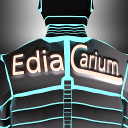I am in the process of buttoning up a Nitehawk conversion on my Voron. I also replaced my extruder thermistor with an OE replacement purchased from a reputable vendor.
Post setup, my heated bed is reading spot on (it’s 18.3 C in my basement aka 65 F). I verified that my extruder is also at ambient temperature by wedging a Thermapen under its silicone sock and letting it acclimate for 10 minutes. The I’m not sure why the extruder would be reading high.
I bought a spare thermistor and wired it in. The result was identical.
Thoughts? Ideas? I’m pretty sure I have the Nitehawk and thermistor set up correctly.
[extruder]
step_pin: nhk:gpio23
dir_pin: nhk:gpio24
enable_pin: !nhk:gpio25
heater_pin: nhk:gpio9
sensor_pin: nhk:gpio29
pullup_resistor: 2200
sensor_type: ATC Semitec 104NT-4-R025H42G`
My Voron with its nighthawk is currently printing, so it’s gonna take some time until I can see how much deviation I get.
You have a spare ` at the end of your sensor_type, maybe Klipper falls back on a generic resistor?
Otherwise could the thermistor conduct some heat from the nh processor? (Maybe through the cable?)
Oh, that ` was me fighting with markdown to get the code portion of the post nicely formatted. I couldn’t figure out newlines and gave up.
I don’t think heat is getting to the extruder via the NH. The thermistor is potted in a m3 bung that’s threaded into the extruder. The extruder itself is at ambient a few mm away.
are these packaged thermometer devices, such as the DS18B20, or a bare thermistor bead?
If it’s just a bead, you probably need to calibrate them.
They’re 104nt’s. I have never calibrated a thermistor for one of my printers before, other than updating the firmware (compile marlin, config Klipper) and choosing the appropriate value.
I did dig up a datasheet for the thermistor, will have to check resistance tonight.
If they’re on board that could be their idle ambient temps.
The currents running through them, resistors, etc all generate some heat.
I tend to look at board temps less about the environment and more about how the board is doing.
Is it suddenly running very hot, etc.
As for the extruder it is attached to a thermal mass. So it may take longer to adjust but you did say it’s been sitting there for a bit.
I am less concerned about the board temp and much more curiosity about the reported temporary difference between the extruder and bed.
I totally agree that the nitehawk PCB temp is quite possibly normal.

My voron with can toolhead, using a pt1000, I’d accept +/- a degree or so but that’s a bit more than that. Could trying calibrating the pullup value manually? I’m using Generic 3950 for the sensor types on the Semitec 100k thermistors (chamber temp and plate temp are both using one of those), had the best results with that personally, could see if that helps things.
Agree that this seems like a bigger than desired difference.
Thanks for the point of reference. I am going to be doing some measuring and math tonight to try to figure out where the source of error is and how much it might/not matter when hot.
Before nitehawk I was using the same hot end and I copied the thermistor type from my prior config while setting up. The bed and extruder were much closer to each other when cold then.




